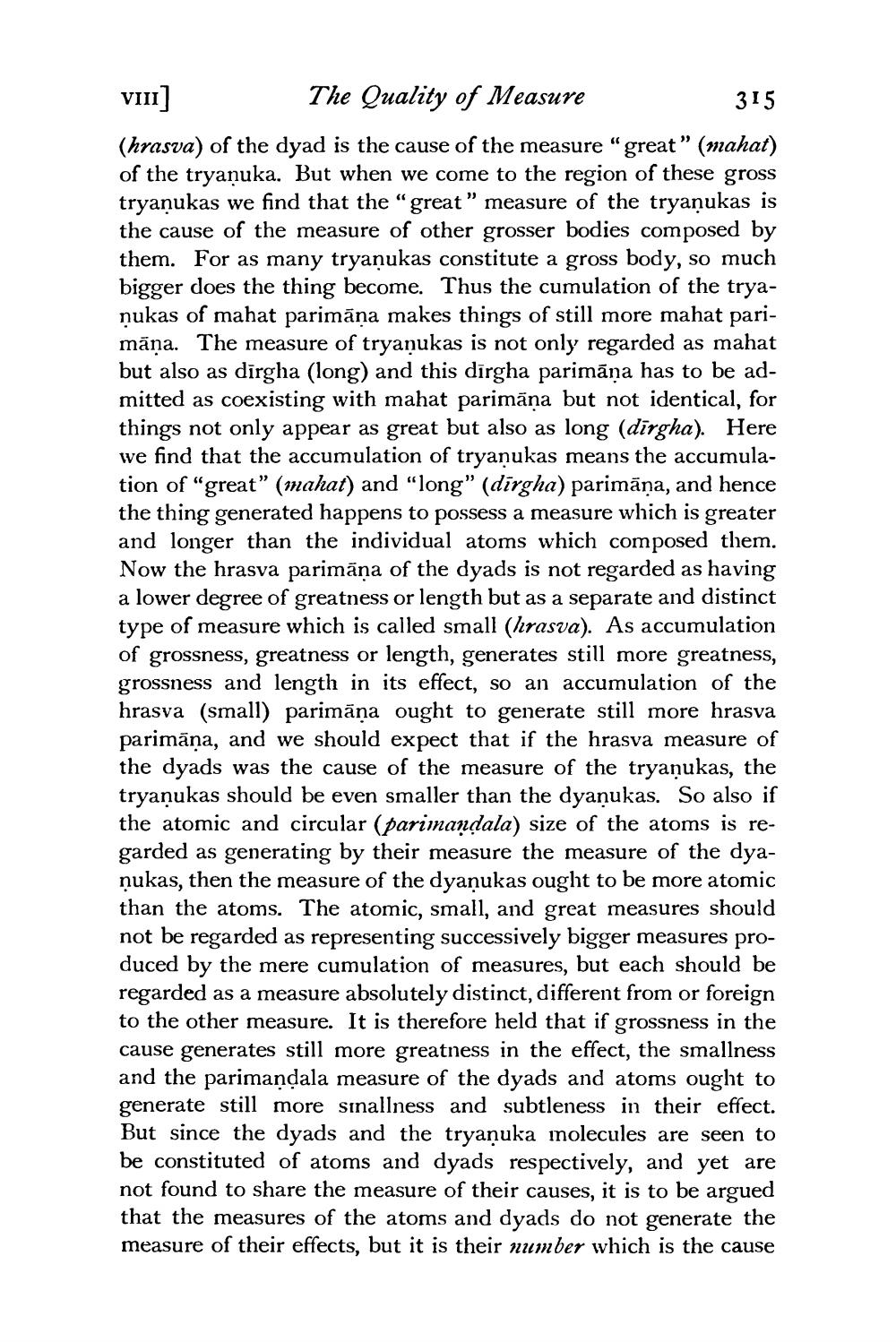________________
VIII] The Quality of Measure
315 (hrasva) of the dyad is the cause of the measure "great" (mahat) of the tryanuka. But when we come to the region of these gross tryanukas we find that the "great" measure of the tryanukas is the cause of the measure of other grosser bodies composed by them. For as many tryaņukas constitute a gross body, so much bigger does the thing become. Thus the cumulation of the tryaņukas of mahat parimāna makes things of still more mahat parimāņa. The measure of tryanukas is not only regarded as mahat but also as dirgha (long) and this dirgha parimāṇa has to be admitted as coexisting with mahat parimāņa but not identical, for things not only appear as great but also as long (dirgha). Here we find that the accumulation of tryaņukas means the accumulation of "great” (mahat) and “long” (dirgha) parimāņa, and hence the thing generated happens to possess a measure which is greater and longer than the individual atoms which composed them. Now the hrasva parimāņa of the dyads is not regarded as having a lower degree of greatness or length but as a separate and distinct type of measure which is called small (hrasva). As accumulation of grossness, greatness or length, generates still more greatness, grossness and length in its effect, so an accumulation of the hrasva (small) parimāna ought to generate still more hrasva parimāņa, and we should expect that if the hrasva measure of the dyads was the cause of the measure of the tryaņukas, the tryanukas should be even smaller than the dyanukas. So also if the atomic and circular (parimandala) size of the atoms is regarded as generating by their measure the measure of the dyaņukas, then the measure of the dyaņukas ought to be more atomic than the atoms. The atomic, small, and great measures should not be regarded as representing successively bigger measures produced by the mere cumulation of measures, but each should be regarded as a measure absolutely distinct, different from or foreign to the other measure. It is therefore held that if grossness in the cause generates still more greatness in the effect, the smallness and the parimandala measure of the dyads and atoms ought to generate still more sinallness and subtleness in their effect. But since the dyads and the tryanuka molecules are seen to be constituted of atoms and dyads respectively, and yet are not found to share the measure of their causes, it is to be argued that the measures of the atoms and dyads do not generate the measure of their effects, but it is their number which is the cause




